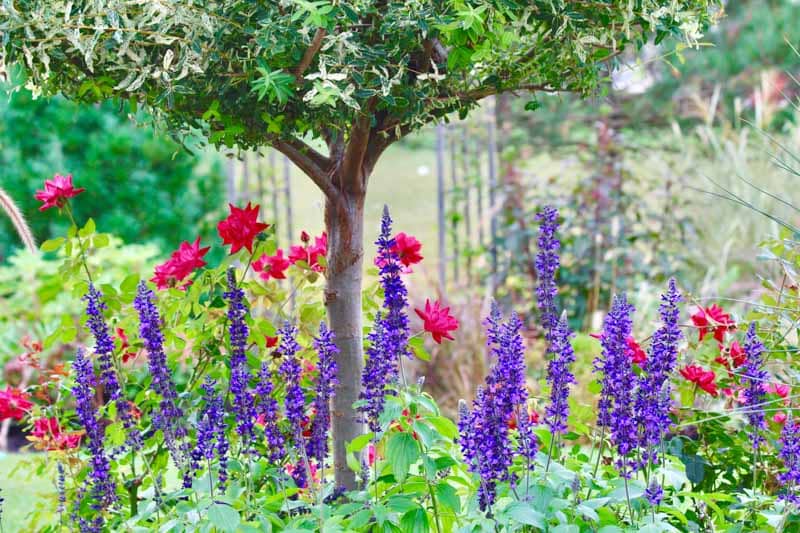Introduction
Gardening enthusiasts often find themselves searching for plants that offer a blend of beauty, resilience, and easy maintenance. Willow shrubs fit the bill perfectly, making them a popular choice for many. These versatile plants not only enhance the aesthetic appeal of a garden. But also serve various practical purposes such as providing shade, windbreaks, and habitat for wildlife. With numerous willow shrub varieties available, it can be challenging to choose the right one for your garden. This article will introduce you to the top five willow shrub varieties, each with its unique characteristics, making them ideal additions to your green space.
1. Arctic Willow (Salix purpurea)
The Arctic Willow, also known as the Purple Osier, is a low-growing shrub that is perfect for smaller gardens or as a ground cover. Its slender, flexible stems have a distinctive purplish hue, which adds a touch of color to your garden even during the colder months. The Arctic Willow is known for its hardiness and ability to thrive in a variety of soil types, including those with poor drainage. This makes it an excellent choice for areas prone to waterlogging.
- Growth Habit: This willow variety grows to about 3 to 5 feet in height and spreads up to 6 feet, forming a dense mat of foliage.
- Foliage: The narrow, lance-shaped leaves are bluish-green in color and provide a soft, textured appearance.
- Best Use: Ideal for erosion control, ground cover, and as an accent plant in mixed borders.
The Arctic Willow is a great option for gardeners looking to add year-round interest and color to their garden without requiring much maintenance.
2. Dappled Willow (Salix integra ‘Hakuro-nishiki’)
The Dappled Willow, often referred to as the Japanese Willow, is renowned for its striking variegated foliage. The leaves emerge in spring with a blend of pink, white, and green, creating a dazzling display that changes throughout the growing season. As summer progresses, the leaves transition to a more subdued green with white margins. But the new growth continues to bring fresh color to the plant.
- Growth Habit: This shrub can reach up to 6 to 10 feet in height and spread, forming a rounded shape that works well in both formal and informal garden settings.
- Foliage: The tri-colored leaves are the highlight of this variety, making it a focal point in any garden.
- Best Use: Perfect for hedges, privacy screens, or as a specimen plant in a prominent location.
The Dappled Willow is a must-have for gardeners who appreciate plants that offer a dynamic visual impact throughout the year.
3. Goat Willow (Salix caprea)
Goat Willow, also known as Pussy Willow, is a versatile shrub that is valued for its early spring catkins. These fluffy, silver-gray catkins are among the first signs of spring and are often used in floral arrangements. Goat Willow is a robust shrub that can adapt to various soil conditions and is particularly tolerant of heavy clay soils.
- Growth Habit: It typically grows to a height of 10 to 20 feet, making it suitable for larger gardens or as a small tree.
- Foliage: The leaves are broad, oval, and dark green with a slightly hairy underside.
- Best Use: Ideal for naturalistic plantings, wildlife gardens, and as a feature plant near water bodies.
Goat Willow is an excellent choice for gardeners looking to attract early pollinators and provide a burst of early-season interest.
4. Black Willow (Salix nigra)
The Black Willow is a large, fast-growing shrub or small tree that is native to North America. It is characterized by its dark, furrowed bark and long, slender leaves that give it a graceful, weeping appearance. This willow variety is highly adaptable and can thrive in wet conditions, making it a good choice for planting near ponds, streams, or low-lying areas.
- Growth Habit: The Black Willow can grow up to 30 to 50 feet tall, with a spread of 20 to 30 feet, making it one of the largest willow shrubs.
- Foliage: The leaves are narrow, lance-shaped, and have a glossy green color, which turns yellow in the fall.
- Best Use: Ideal for wetland restoration, erosion control, and as a shade tree in large gardens.
The Black Willow is perfect for those looking to create a natural, woodland feel in their garden, especially in areas with excess moisture.
5. Creeping Willow (Salix repens)
Creeping Willow is a low-growing, prostrate shrub that spreads to form a dense mat of foliage. It is an excellent choice for rock gardens, slopes, or as a ground cover in areas where other plants might struggle to establish. The Creeping Willow is hardy and can withstand harsh conditions, including coastal environments with salty winds.
- Growth Habit: This shrub typically reaches a height of 1 to 2 feet and spreads up to 6 feet, forming a carpet-like appearance.
- Foliage: The small, oval leaves are gray-green and have a slightly woolly texture.
- Best Use: Perfect for ground cover, rock gardens, and stabilizing slopes or sand dunes.
Creeping Willow is a valuable addition to gardens that require low-maintenance, ground-hugging plants that can thrive in challenging conditions.
Conclusion
Willow shrubs offer a diverse range of options for gardeners, each with its unique attributes and uses. Whether you’re looking for a striking focal point, a hardy ground cover, or a plant that can thrive in wet conditions, there’s a willow variety that will meet your needs. The Arctic Willow, Dappled Willow, Goat Willow, Black Willow, and Creeping Willow each bring. Their own charm and functionality to the garden, making them worthy additions to any landscape. By selecting the right willow shrub for your garden, you can enjoy both aesthetic beauty and practical benefits. Creating a space that is both pleasing to the eye and beneficial to the environment.

